Planning worship?
Check out our sister site, ZeteoSearch.org,
for 20+ additional resources related to your search.
- |
User Links
Person Results
W. Chatterton Dix

1837 - 1898 Person Name: William Dix Topics: Advenimiento Author of "Jesús es el Mesías" in Celebremos Su Gloria Most British hymn writers in the nineteenth century were clergymen, but William C. Dix (b. Bristol, England, 1837; d. Cheddar, Somerset, England, 1898) was a notable exception. Trained in the business world, he became the manager of a marine insurance company in Glasgow, Scotland. Dix published various volumes of his hymns, such as Hymns of Love and Joy (1861) and Altar Songs: Verses on the Holy Eucharist (1867). A number of his texts were first published in Hymns Ancient and Modern (1861).
Bert Polman
========================
Dix, William Chatterton, son of John Dix, surgeon, of Bristol, author of the Life of Chatterton; Local Legends, &c, born at Bristol, June 14, 1837, and educated at the Grammar School of that city. Mr. Chatterton Dix's contributions to modern hymnody are numerous and of value. His fine Epiphany hymn, "As with gladness men of old,” and his plaintive ”Come unto Me, ye weary," are examples of his compositions, many of which rank high amongst modern hymns. In his Hymns of Love and Joy, 1861, Altar Songs, Verses on the Holy Eucharist, 1867; Vision of All Saints, &c, 1871; and Seekers of a City, 1878, some of his compositions were first published. The greater part, however, were contributed to Hymns Ancient & Modern; St. Raphaels Hymnbook, 1861; Lyra Eucharidica, 1863; Lyra Messianica, 1864; Lyra Mystica, 1865; The People's Hymns, 1867; The Hymnary, 1872; Church Hymns, 1871, and others. Many of his contributions are renderings in metrical form of Dr. Littledale's translation from the Greek in his Offices . . . of the Holy Eastern Church, 1863; and of the Rev. J. M. Rodwell's translation of hymns of the Abyssinian Church. These renderings of the "songs of other Churches" have not received the attention they deserve, and the sources from whence they come are practically unknown to most hymnal compilers. Mr. Dix has also written many Christmas and Easter carols, the most widely known of which is "The Manger Throne." In addition to detached pieces in prose and verse for various magazines, he has published two devotional works, Light; and The Risen Life, 1883; and a book of instructions for children entitled The Pattern Life, 1885. The last-named contains original hymns by Mr. Dix not given elsewhere. In addition to the more important of Mr. Dix's hymns which are annotated under their respective first lines, the following are also in common use:-
1. God cometh, let the heart prepare. Advent. In his Vision of All Saints, &c, 1871.
2. Holy, holy, holy, to Thee our vows we pay. Holy Communion. Published in his Altar Songs, 1867, in 6 stanzas of 6 lines, and headed "Eucharistic Processional for Dedication Feast." In the Society for Promoting Christian Knowledge Church Hymns, 1871, and others in an abridged form.
3. How long, O Lord, how long, we ask. Second Advent. Appeared in the Appendix to the Society for Promoting Christian Knowledge Psalms & Hymns, 1869, and repeated in several collections.
4. In our work and in our play. Children's Hymn. Published in his Hymns and Carols for Children, 1869, and is largely adopted in children's hymnbooks, as Mrs. Brock's Children's Hymnbook, 1881, and others. Also in the Society for Promoting Christian Knowledge Church Hymns, 1871.
5. In the hollow of Thine hand. For Fair Weather. Appeared in the People's Hymns, 1867, and repeated in several others.
6. Joy fills our inmost heart today. Christmas. Printed in the Church Times, and then on a Flysheet by Gr. J. Palmer, as the third of Four Joyful Hymns for Christmas, circa 1865. It is in the Society for Promoting Christian Knowledge Church Hymns, 1871, and other hymnals. It is also one of Mr. Dix's Christmas Customs & Christmas Carols, not dated.
7. Lift up your songs, ye thankful. St. Ambrose. Contributed to the People's Hymns, 1867.
8. Now in numbers softly flowing. St. Cecilia. Contributed to the People's Hymns, 1867.
9. Now, our Father, we adore Thee. Praise to the Father. Appeared in the Appendix to the S. P. C. K. Psalms & Hymns, 1869.
10. O Christ, Thou Son of Mary. St. Crispin. First printed in the Union Review, Sept., 1866, and thence into the People's Hymns, 1887.
11. O Cross which only canst allay. Glorying and Trusting in the Cross. Published in the People's Hymns, 1867.
12. O Thou the Eternal Son of God. Good Friday. Appeared in Lyra Messianica, 1864; the author's Hymns and Carols for Children, 1869; the S. P. C. K. Church Hymns, 1871, &c.
13. On the waters dark and drear. For use at Sea. Published in Hymns for Public Worship, &c. (St. Raphael's, Bristol), 1861; the S. P. C. K. Church Hymns, 1871, &c.
14. Only one prayer to-day. Ash Wednesday. Contributed to the People's Hymns, 1867.
15. Sitting at receipt of custom. St. Matthew. Appeared in the People's Hymns, 1867.
16. The Cross is on thy brow. Confirmation. In the 1869 Appendix to the S. P. C. K. Psalms & Hymns.
17. The stars above our head. Work and Humility. In the 1869 Appendix to the S. P. C. K. Psalms & Hymns.
18. When the shades of night are falling. Evening Hymn to the Good Shepherd. In the author's Seekers of a City, &c. [1878].
Most of Mr. Dix's best-known hymns, and also some of those named above, are in common use in America and other English-speaking countries. In Great Britain and America from 30 to 40 are in common use. He died Sept. 9, 1898.
-- John Julian, Dictionary of Hymnology (1907)
======================
Dix, William Chatterton, p. 302, ii. Additional hymns by Mr. Dix now in common use are:—
1. Lift up your songs, ye angel choirs. Ascension.
2. Now, my soul rehearse the story. Christ Feeding the Multitude.
3. Within the temple's hallowed courts. Blessed Virgin Mary. These hymns are from his Altar Songs, 1867.
--John Julian, Dictionary of Hymnology, Appendix, Part II (1907)
W. Chatterton Dix
William E. Booth-Clibborn
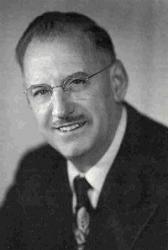
1893 - 1969 Topics: Advenimiento Author of "¡Qué bella historia!" in Celebremos Su Gloria William E. Booth-Clibborn was born on August 4, 1893 in Switzerland. He was the son of Arthur and Catherine Booth-Clibborn, and became the best known of the Booth-Clibborn children, having a worldwide ministry of evangelism and writing. He accepted the Oneness doctrine and was baptized in Jesus' name. Meetings he conducted in Australia during the early 1930s helped found several Pentecostal churches. He later founded Immanuel Temple in Portland, Oregon, where he died in 1969.
From www.apostolicarchives.com
William E. Booth-Clibborn
Franz Xaver Gruber
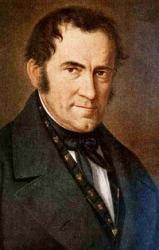
1787 - 1863 Person Name: Franz Gruber Topics: Advenimiento Composer of "STILLE NACHT" in Celebremos Su Gloria Franz Xaver Gruber (1787-1863) was born into a linen weaver's family and studied violin and organ even though his father wanted him to work in the family business. In addition to serving as parish organist for St. Nicholas Church in Obendorf, he taught school in nearby Arnsdorf (1807-1829) and Berndorf (1829-1833). He spent the balance of his career as organist and choir director in Hallein, where he founded the famous Hallein Choral Society.
Bert Polman
Franz Xaver Gruber
Thomas á Kempis

1380 - 1471 Person Name: Tomás de Kempis, s. 15 Topics: Advenimiento Author (attributed to) of "Oh profundo, inmenso amor" in Celebremos Su Gloria Thomas of Kempen, commonly known as Thomas à Kempis, was born at Kempen, about fifteen miles northwest of Düsseldorf, in 1379 or 1380. His family name was Hammerken. His father was a peasant, whilst his mother kept a dame's school for the younger children of Kempen. When about twelve years old he became an inmate of the poor-scholars' house which was connected with a "Brother-House" of the Brethren of the Common Life at Deventer, where he was known as Thomas from Kempen, and hence his well-known name. There he remained for six years, and then, in 1398, he was received into the Brotherhood. A year later he entered the new religious house at Mount St. Agnes, near Zwolle. After due preparation he took the vows in 1407, was priested in 1413, became Subprior in 1425, and died according to some authorities on July 26. and others on Aug. 8, 1471.
Much of his time was occupied in copying Missals, Breviaries, and other devotional and religious works. His original writings included a chronicle of the monastery of St. Agnes, several biographies, tracts and hymns, and, but not without some doubt as to his authorship the immortal Imitatio Christi, which has been translated into more languages than any other book, the Bible alone excepted. His collected works have been repeatedly published, the best editions being Nürnberg, 1494, Antwerp in 1607 (Thomae Malleoli à Kempis . . . Opera omnia), and Paris in 1649. An exhaustive work on St. Thomas is Thomas à Kempis and the Brothers of the Common Life, by S. W. Kettlewell, in 2 vols., Lond., 1882. In this work the following of his hymns are translated by the Rev. S. J. Stone:—
i. From his Vita Boni Monachi, ii.:—
1. Vitam Jesu Christi. Imitation of Christ. Be the life of Christ thy Saviour.
2. Apprehende anna. Christian Armour. Take thy weapons, take thy shield.
3. Sustine dolores. Resignation. Bear thy sorrows with Laurentius.
ii. From his Cantica Spiritualia:—
4. 0 dulcissime Jesu. Jesus the most Dear. 0 [Child] Christ Jesu, closest, dearest.
5. 0 Vera summa Trinitas. Holy Trinity. Most true, most High, 0 Trinity.
6. Ad versa mundi tolera. Resignation. Bear the troubles of thy life.
7. 0 qualis quantaque laetitia. Eternal Life. 0 joy the purest, noblest.
Of these translations Mr. Stone has repeated Nos. 5, 6, and 7 in his Hymns, 1886, and No. 4 in a rewritten form as "Jesus, to my heart most precious," in the same. Pastor O. A. Spitzen has recently published from a manuscript circa 1480, ten additional hymns by Thomas, in his “Nalezing op mijn Thomas à Kempis," Utrecht, 1881. Six of these had previously been printed anonymously by Mone. The best known are "Jerusalem gloriosa", and "Nec quisquam oculis vidit". We may add that Thomas's hymnwriting is not regarded as being of the highest standard, and that the modern use of his hymns in any form is very limited.
-- John Julian, Dictionary of Hymnology (1907)
Thomas á Kempis
B. R. Hanby
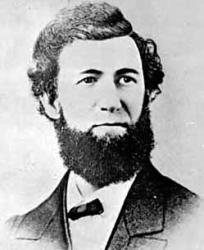
1833 - 1867 Person Name: Benjamin R. Hanby Topics: Advenimiento Author of "Es Jesús ¡Qué bella historia!" in Celebremos Su Gloria Benjamin Russell Hanby was born July 22, 1833, the oldest of eight children, to Bishop William Hanby in Rushville, OH. The family moved to Westerville,OH where Bishop Hanby was a "conductor" on the Underground Railroad. In his short life Benjamin graduated from Otterbein, taught school, became a United Brethren minister, started a singing school, was editor for John Church publishers in Cincinnati and composed many songs and hymns before he died of tuberculosis March 15, 1867. His home in Westerville was Ohio's first memorial to a composer. It was a stop on the Underground Railroad for slaves escaping to Canada and is a national historic site, a Methodist church Landmark and a Network to Freedom site for the National Park Service. There is a Hanby Residence Hall at Otterbein University. Best known for "Up on the housetop" and "Darling Nellie Gray," Hanby published many hymns including "Little Eyes" and "Who is He?
Mary Louise VanDyke
B. R. Hanby
William Hayman Cummings

1831 - 1915 Person Name: William H. Cummings Topics: Advenimiento Arranger of "MENDELSSOHN" in Celebremos Su Gloria William H. Cummings (b. Sidbury, Devonshire, England, 1831; d. Dulwich, London, England, 1915) had a lifelong love of Felix Mendelssohn, sparked when he sang at age sixteen in the first London performance of Elijah, which was directed by Mendelssohn himself. As a young boy, Cummings had been a chorister at St. Paul's Cathedral and later sang in the choirs of the Temple Church, Westminster Abbey, and the Chapel Royal. Cummings became a famous tenor–he sang in oratorios and was especially known for his evangelist role in the Bach passions. He taught voice at the Royal Academy of Music and the Royal Normal College and School for the Blind in London and was also an accomplished organist. Cummings wrote books and articles on music history, wrote a biography of Henry Purcell and edited his music, and composed many choral pieces.
Bert Polman
William Hayman Cummings
Georg Weissel
1590 - 1635 Person Name: George Weissel Topics: El Hijo Su Advenimiento Author of "Vuestras Cabezas Hoy Alzad" in El Himnario Weissel, Georg, son of Johann Weissel, judge and afterwards burgomaster at Doranau, near Königsberg, was born at Domnau in 1590. He studied at the University of Königsberg, from 1608 to 1611, and thereafter, for short periods, at Wittenberg, Leipzig, Jena, Strassburg, Basel and Marburg In 1614 he was appointed rector of the school at Friedland near Domnau, but resigned this post after three years, and returned to Königsberg to resume his studies in theology. Finally, in 1623, he became pastor of the newly erected Altrossgart church at Königsberg, where he remained till his death, on August 1, 1635.
Weissel was one of the most important of the earlier hymn-writers of Prussia. His hymns, about 20 in all, are good in style, moderate in length, and varied in metre. The earliest seem to have been written for use at the consecration of the Altrossgart church on the 2nd Sunday in Advent, 1623. The majority are for the greater festivals of the Christian year. The best are No. ii. below, and those for the dying. They appeared mostly in the Königsberg hymn-books, 1639-1650, and in the Preussische Fest-Lieder, pt. i., Elbing, 1642; pt. ii., Königsberg, 1644 [Berlin Library].
Those of Weissel's hymns which have passed into English are:—
i. Im finstern Stall, o W under gross. Christmas. First published in B. Derschau's Ausserlesene geistliche Lieder, Königsberg, 1639, p. 7, in 5 stanzas of 5 lines In the Preussische Fest-Lieder, pt. i., 1642, No. 14, it is entitled "On the Birth of Christ, Lux in tenebris lucet.” The translation in common use is:—
0 miracle of love and might This is a somewhat free translation, omitting stanza v., by Dr. Kennedy, as No. 104 in his Hymnologia Christiana, 1863.
ii. Macht hoch die Thür, das Thor macht weit. Advent. This is a Hymn of Triumph for the Entry of the King of Glory, founded on Ps. xxiv.; and is one of the finest German Advent hymns. First published in the Preussische Fest-Lieder, pt. i., 1642, No. 2, in 5 stanzas of 8 lines, marked as "On the 1st Sunday of Advent."
The translations in common use are:—
1. Lift up your heads, ye mighty gates. This is a good and full translation by Miss Winkworth, in herLyra Germanica, 1st Ser., 1855, p. 10, and her Chorale Book for England, 1863, No. 25. In the Congregational Church Hymnal, 1887, the Evangelical Hymnal, N. Y., 1880, and others, the original form is followed. Other forms are:—
(1) Behold One cometh from afar (i. alt.). This (partly from Mercer) is in the Supplement to the New Congregational Hymn Book, and the 1874 Appendix. to the Leeds Hymn Book.
(2) Behold He cometh from afar. In J. L. Porter's Collection, 1876, altered from No. l.
(3) Oh! hallowed is the land and blest (iii. lines 1, alt.). In the American Sabbath Hymn Book, 1858, &c.
(4) 0 blest the souls, for ever blest (iii. lines1, alt.). In Hymns of the Spirit, Boston, U.S., 1864.
(5) Fling wide the portals of your heart (iv.). In the American Unitarian Hymn Book, 1868.
2. The mighty gates of earth unbar. This is by W. Mercer, based on Miss Winkworth's translation, in his Church Psalm & Hymn Book, 1857, No. 14 (Ox. ed., 1864, No. 71), repeated in Kennedy, 1863. Another translation is: "Lift up, lift up your heads, ye gates," by G. Moultrie, in his Espousals of St. Dorothea, 1870.
iii. Wo ist dein Stachel nun, o Tod? Easter. Founded on 1 Cor. xv., 55-58. First published as No. 3 in pt. ii., 1644, of the Preussische Fest-Lieder, in 5 stanzas of 8 lines, entitled "For the Easter festival." Thence in the Königsberg Gesang-Buch, 1650, p. 193, and others. The form which has passed into English is that in the Hannover Gesang-Buch, 1657, No. 74, in 10 stanzas. This, beginning "O Tod, wo ist dein Stachel nun," is entirely rewritten, probably by Justus Gesenius. Translated as:—
O Death! where is thy cruel sting? This is a full and good version of the 1657 text, as No. 80 in the Ohio Lutheran Hymnal, 1880, marked as a compilation. [Rev. James Mearns, M.A.]
-- Excerpts from John Julian, Dictionary of Hymnology (1907)
Georg Weissel
J. A. P. Schulz
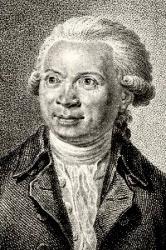
1747 - 1800 Person Name: Johann A. P. Schulz, s. 18 Topics: Advenimiento Composer of "IHR KINDERLEIN KOMMET" in Celebremos Su Gloria Johann Abraham Peter Schulz Germany 1747-1800. Born at Luneburg, Germany, son of a baker, he attended St Michaelis school in Luneburg and studied organ, then the Johanneum from 1759-1764. In 1765 he was a student of composer, Johann Kimberger, and then taught in Berlin himself. In 1768 Kimberger recommended Schulz for the position of music teacher and accompanist to the Polish Princess Sapieha Woiwodin von Smolensk. Schulz moved to Berlin and traveled with her for three years performing throughout Europe, where he came in contact with many new musical ideas. He married Catharina Maria Gercken, and they had a daughter, Celle. He served as the conductor of the French Theatre in Berlin from 1776-1780. From 1786-1787 he was the Kapellmeister of Prince Henry in Rheinsberg. He began writing operas in 1785 and became musical director of the Berlin French theatre. Schulz went on to serve as Court Kapellmeister in Copenhagen from 1787-1795 before returning to Berlin. In Copenhagen the music library burned down, and he had a breakdown in health from trying to save it. His health suffered further from the effects of a shipwreck he experienced in 1796. Schulz wrote seven operas, stage music, oratorios, and cantatas, as well as piano pieces, folk songs, and church music. He also wrote articles on music theory for Johann Georg Sulzer’s ‘Allgemeine Theorie der schonen Kunste’ in four volumes. He died at Schwedt an der Oder, Germany.
John Perry
J. A. P. Schulz
Federico Fliedner
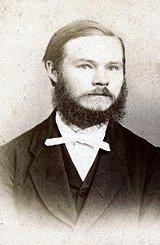
1845 - 1901 Topics: Advenimiento Translator of "Oh, santísimo, felicísimo" in Celebremos Su Gloria [Friedrich Ludwig Fliedner, Fritz Fliedner]
Born: June 10, 1845, Kaiserswerth, Düsseldorf, Germany.
Died: April 25, 1901, Madrid, Spain, of typhus.
Buried: Civil cemetery, Madrid, Spain.
Son of Theodor Fliedner, founder of the Kaiserswerth Deaconess Institute, Federico was educated at the Gymnasium in Gütersloh, studied theology at Halle (1864-46) and earned his PhD at Tübingen (1867). He served as a nurse in the Austro-Prussian war of 1866, and taught school for a year in rural Hilden. After ordination in 1870, he left Germany to be a missionary to Spain, settling in Madrid and becoming a chaplain at the German embassy. He learned Spanish, attended a Spanish high school, and studied medicine at the Universidad Central.
Fliedner was instrumental in creating what is now known as the Iglesia Evangélica Española. In 1873, Fliedner founded the Librería Nacional y Extranjera, an extensive collection of text books and periodicals. Among these was The Children’s Friend, published from 1874 to 1939.
Fliedner wrote biographies of John Howard, Elizabeth Fry, missionary-explorer David Livingstone, Martin Luther (1878), and his own parents, Theodore Fliedner of Kaiserswerth (1883) and Caroline Fliedner of Kaiserswerth (1883). He also wrote an autobiography, published first in German in two volumes (Aus meinem Leben, 1901-03), then translated into Spanish and published posthumously in the Christian Magazine (Nos. 513 to 553). He started a Spanish translation of the New Testament with notes from Frenchman Edouard Faivre.
--www.hymntime.com/tch
Federico Fliedner
Lewis H. Redner
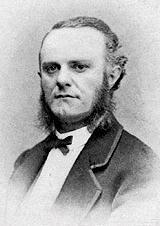
1831 - 1908 Person Name: Lewis Redner Topics: Advenimiento Composer of "ST. LOUIS" in Celebremos Su Gloria Lewis Henry Redner (1831-1908) was born in Philadelphia, where he became a real estate agent and served on weekends as an organist and Sunday School Superintendent. He spent nineteen years at Holy Trinity church where Phillip Brooks was rector, and is credited with increasing attendance at the Sunday School from thirty-one to more than a thousand. In 1868 Brooks asked him to write a tune for his new text for children inspired by his recent trip to Bethlehem. Redner composed the tune the night before it was to be sung in worship on Sunday morning. The text and tune were first published in 1894 in The Church Porch, where the tune was named ST. LOUIS, possibly after the composer’s name. Redner is remembered today because of this one tune that has remained a Christmas favorite.
Emily Brink
Lewis H. Redner


 My Starred Hymns
My Starred Hymns


